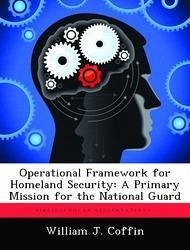Before 11 September 2001, the U.S. military's responsibilities for homeland security focused on providing support to civilian authorities during the aftermath of natural and manmade disasters. The terrorist attacks against the United States on 11 September changed the nation's perceptions of and the U.S. military's role in homeland security. The primary operational construct must remain support to civilian authorities; however, the U.S. military must take the lead in shaping and fostering unity of effort among the many federal, state and local agencies with homeland responsibilities. The U.S. military's homeland security responsibilities at the tactical level flow from the traditional support to civilian authorities in disaster relief operations and the Office of Homeland Security's mission to detect, prepare for, prevent, protect against, respond to, and recover from the terrorist attacks. The Department of Defense must establish an operational-level structure within the U.S. Northern Command to tie these tactical missions to the President's strategic objectives for homeland security. An effective operational-level framework for the land and maritime homeland security requirements within US Northern Command is a joint, multi-component command and control organization structured at the national, regional and state level. The U.S. National Guard draws on its historical experience in support to civilian authorities and established relationships in the local communities to provide the leadership for this operational framework. At the national level, a joint task force (JTF-USA) aligns with the Federal Emergency Management Agency (FEMA) and develops the land and maritime campaign for homeland security. At the regional level, ten Regional Homeland Security Commands (RHLSCOM) align with the ten FEMA regions and develop region-specific homeland security operation plans and facilitate interagency coordination. At the state level, each state National Guard establishes a Hom
Hinweis: Dieser Artikel kann nur an eine deutsche Lieferadresse ausgeliefert werden.
Hinweis: Dieser Artikel kann nur an eine deutsche Lieferadresse ausgeliefert werden.








